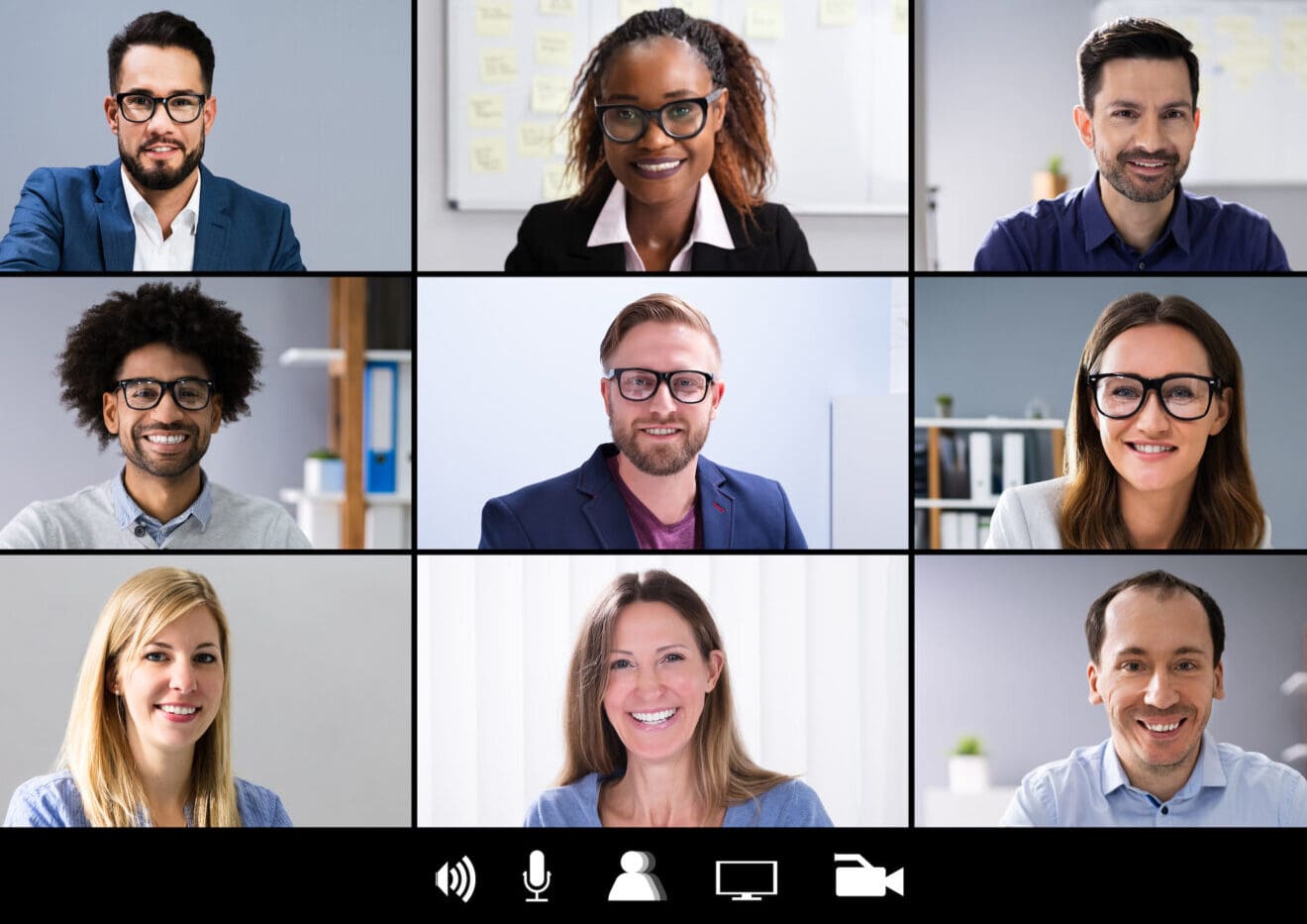
This is a guest article produced by Canadian-based Impetus Digital. The original post can be accessed here

While Pharma was already slowly pivoting towards virtual events as a substitute for, or supplement to, in-person meetings, COVID-19 quickly changed virtual events from a nice-to-have to a must. With over 11 years of experience in virtualizing advisory boards, medical education events, internal brand planning sessions, co-author working groups, and grant review committees (just to name a few), Impetus Digital has a wealth of experience and knowledge to share. Below are our top 10 tips for “virtualizing” in-person meetings.
1. A full-day in-person meeting does not translate to a full-day web meeting

Zoom fatigue is real! While we have noticed that participants’ tolerance and availability for longer meetings have increased during the COVID-19 pandemic, we recommend capping web meetings at half a day (4 hours) max. Further, for medical education events, neuroscientific evidence suggests that microlearning is actually superior to longer, one-off events. 1 Other psychological phenomena such as the Recency Effect and Zeigarnik Effect also support the use of shorter, frequent touchpoints for all types of stakeholder meetings. This means that if your event was originally planned as a 7-hour all-day meeting, you have 4 options:
- You can stick to the exact same agenda and divide the meeting into two or more web meetings, at least 1 day apart.
- Alternatively, you can remove parts of the agenda to fit it all into a 2–4-hour web meeting.
- You can add an asynchronous pre-meeting touchpoint to better prepare the advisors. This way, you can spend less time on didactic presentations and more time on discussions and workshops during the actual web meeting.
- Finally, you can add an asynchronous post-meeting touchpoint to follow up on unfinished discussions or unanswered questions from the web meeting.
There is no “right” choice here; the best option will depend on the specific project, and it may require a combination of 2, 3, or all 4 of the above. At Impetus Digital, we are experts in how to strategically engage stakeholders using our various tools in order to maximize insights and interactivity, and we can help determine which approach will result in optimal engagement.
2. Consider alternative formats beyond web meetings
When virtualizing an in-person meeting, most people will instinctively think of Zoom, Webex, or Skype meetings as the go-to. However, to avoid the aforementioned Zoom fatigue, other innovative formats could (and should) be considered.
For example, for medical education, why not try asynchronous case study discussions or virtual journal clubs? For grant review programs or steering committees, most, if not all, of the work can be done asynchronously as well. Co-creation of clinical, medical, marketing, or educational materials can be done via asynchronous annotation tools such as InSite Annotator™. In terms of advisory boards, consider recording short videos or sharing concise slide decks summarizing key clinical/real-world data and then have the advisors review and discuss these asynchronously, on their own time. If you prefer a hybrid between synchronous and asynchronous meetings, this is also a great way to prepare the participants for the upcoming web meeting. Basically, anything you can do in-person or in a web meeting, you can also do asynchronously through our wide variety of cutting-edge tools.
3. Actively involve your participants in co-creating the event
The sudden move to all-virtual events provides a great opportunity to engage participants in different and (one could argue) better ways. One such way is to leverage them to co-create the event. This might involve asynchronous touchpoints with the whole group or a small steering committee, and helps determine what the participants really want to spend time on in the webinar. When participants help co-create an event, they will get more out of it.
4. Minimize the time spent on didactic presentations
To keep synchronous web meetings interactive and engaging, there needs to be ample time for questions, discussions, and workshops. The best way to do this, without going overtime or sacrificing data or pipeline updates, is to share the materials to discuss before the main event. While this could be done by emailing manuscripts or slide decks to review, this is not necessarily the most effective approach. Instead, we find that adding a pre-meeting asynchronous touchpoint, where materials are presented in bite-sized chunks and then discussed and dissected among the participants, is a far more effective way to prepare. This also provides an opportunity to ask questions about the participants’ clinical practices and their familiarity with the topics to be discussed. Subsequently, these insights can be leveraged during the live meeting to tailor the presentations and discussions to the audience.
5. Come prepared
Whereas a pre-meeting touchpoint is a great way for the participants to prepare for a web meeting, it is key that the event sponsor also comes prepared. This is where hiring an experienced vendor such as Impetus Digital comes in. At a minimum, the vendor should be able to:
- Provide strategic support to the client on how to best engage the participants.
- Address any security concerns surrounding the different virtual platforms and web meeting technologies.
- Liaise with client leads and other vendors and consultants before the meeting, as required.
- Conduct technical run-throughs and meeting dry-runs.
When both the event organizers and the participants come prepared, meetings run smoother and discussions are more interactive and insightful.
6. Ensure there is real-time technical support for you and the participants

Another reason to work with a vendor to plan and execute both internal and external stakeholder meetings is the technical support provided. Best practices on the backend include always having a direct line to technical support via chat or email (both for the organizer and participants) and always having at least two digital experts on the line to act as co-hosts and provide technical support.
7. Leverage a variety of interactive web meeting features
Most web meeting platforms come with several interactive features such as polling or chat rooms. We recommend leveraging as many of these tools as possible, including, but not limited to, breakout rooms, chat and Q&A features, whiteboarding/annotation, real-time polls, and word cloud generation.
Especially, polling questions serve as great ice breakers and discussion starters and should be incorporated into every meeting.
Likewise, breakout rooms, with or without whiteboarding, are ideal for interactive workshops. Participants can be divided into small breakout groups (e.g. 2–6 people) and asked to brainstorm solutions to a particular problem. They then return to the main room after a certain time and share back their findings.
8. Improve participant engagement and interactivity by encouraging the use of video and hiring an expert moderator

For advisory boards and other meetings where this is active participation, we encourage the use of video. One of the downsides of virtual vs. in-person meetings is that reading body language becomes much harder. Video is not a perfect substitute but does improve interactivity compared to only using audio.
We also strongly encourage the use of an expert moderator to keep the discussions flowing and to make sure that everyone gets a say. Compared to asynchronous touchpoints, a disadvantage of both in-person and synchronous web meetings is that there are often two or three more verbose participants who can sometimes own the discussion. Having a good moderator can help partially overcome this issue. Further, having a peer as the moderator, rather than a Pharma representative, brings a certain level of authenticity to the meeting.
9. Take breaks!
For long synchronous virtual meetings (> 2 hours), one or more breaks is a must to keep the participants’ attention. Usually, a 10- to 15-minute break is sufficient to allow participants to go to the bathroom, stock up on snacks, and refill their coffee. To add an element of ‘fun’ into virtual meetings, you can share fun videos or host a virtual trivia contest during the breaks.
10. Follow-up with the advisors after the web meeting
Lastly, it is key to stay in touch and follow-up with the advisors after the web meeting, including by immediate post-meeting feedback surveys. Additionally, we recommend a post-meeting asynchronous touchpoint at around 2–4 weeks after the webinar. Ideally, the participants should be engaged continuously over time, at least 3–4 times a year. Regular interactions also help create authentic and sustained relationships with your customers and key opinion leaders, and ensures a steady stream of insights throughout the year.








